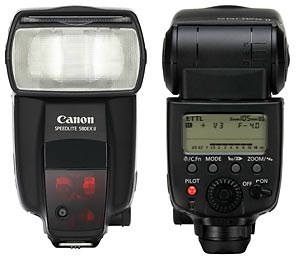How to do good photo?
If it can't grab the eye from a distance, it will never be an interesting photo, regardless of how many fine details it might have. Details don't matter if there's no story behind it.
The reason my image above has won so many awards in so many countries and is picked continually as one of my best images is because of its strong structure.
What is this structure? It is the broad underlying colors, shapes and contrasts between light and dark upon whose structure all the other far less important details lie.
In this image, we have a big red diamond in the middle. It is surrounded by blue-gray. The big red rectangle is the obvious, positive space. The blue-gray around it is called negative space.
Red jumps out at you, especially when put in front of blue. Red does that.
I used an ultra-wide lens. Ultra-wide lenses get darker in the corners, an effect called falloff. This makes the center relatively brighter, adding emphasis. This central emphasis, in addition to being red, is what grabs your eye and pulls you in from a mile away.
This is what makes this shot a winner. Nothing else matters much compared to the way the big red diamond grabs you.
Only after its caught your eye does anything else matter.
This is crucial: if this image didn't catch your eye like this, it wouldn't mean much.
Once a photo has caught your attention, it needs to have details to keep the eyes interested. This is easy. Every photo has details. The problem is how few photos have any sort of underlying structure to catch your eye in the first place.
In this case, the less important details are the yellow peeking out from behind the red, the clouds swooping out from the center, the crud on the concrete at your feet and the reinforcing mesh seen peeking out of the top of the red wall, at least when printed at gallery size.
This photo, like all good photos, is about shapes, colors and balances. It has nothing to do with the fact that the actual subject was an abandoned, burnt-out bathhouse with no roof.
It's nice that I shot this on 4x5" film so that viewers can see every detail on every dead bug on every paint chip on the ground, but if the strong structure didn't grab the eyes in the first place, the viewer would just move on to the next image on the wall of the gallery.
Most photographers snap photos, paying attention only to the details, but ignoring the far, far more important fundamentals. Most photographers don't even know that there are fundamentals!
These fundamentals are the largest, obvious elements of light and dark, colors and shapes.
You have to get this underlying structure right, otherwise the photograph has no basis on which to stand.
If I had made this shot in black-and-white, there would be little to no contrast between the red wall and the blue. The blue is often lighter than the red in this photo, so even using a red filter in B&W would not have gotten me what I needed to catch your eye. In color, the color red takes charge and makes this shot successful.
You should be able to defocus your eyes and look at your image from a hundred feet away, and the basic organization of elements within your frame should still be obvious.
If your image goes away as a thumbnail-sized image, it has no structure. It sucks. If it doesn't jump out at you as a thumbnail, you've made a boring image, regardless of how big or detailed you print it..Canon photo
The shot above still grabs people, even as a thumbnail. As a thumbnail, people want to click it and see what's going on. It's not just another gray square.
If it doesn't sing as a thumbnail, no amount of Photoshop, HDR or gigapan stitching will give it any more structure. It will still suck as hard, no matter how much time you waste on your computer. You have to get it right in your camera.
The one thing you can do later is to burn and dodge. This means lightening and darkening different parts of the image to emphasize what's important, and deemphasize what's not.
Photographs without the basics are boring. An image, be it a photograph, painting, sketch or gigapan, is meaningless unless its basics are right.
The reason so many photos are so bad is because there is no underlying structure. Bad photos may be loaded with details, but forget to get the big, broad basics of composition, light and color correct.
Sadly, most photographers are blind to the basics, and only by chance when the basics come together do they get a good shot.
More sadly, since so few photographers are paying any attention to the basics, even when they do get a good shot, they don't know why it looks good, so they can't reproduce it.
When you learn to look for the basics first, and can get the basics of composition down, you'll be able to shoot anything, anywhere, with any sort of cell-phone camera, and walk away with the images everyone else covets.
People who are blind to the basics are the great majority of people who keep throwing more money at more cameras, and never get any better pictures.
It's the basic underlying composition that makes or breaks an image.









